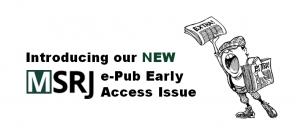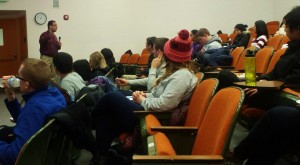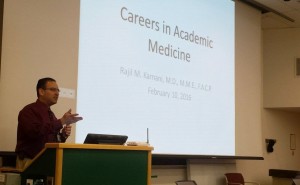Pain Relief and Intervertebral Disc Rehydration Following Wallis® Interspinous Device Implantation: a Case Report.
Author: Carter R. Mohnssen, B.S.1,2, Kenneth Pettine, MD2, and Nicole Rittenhouse, MA, CCRC2
Author Affiliations:
1 Creighton University School of Medicine, Omaha, Nebraska, USA.
2 The Spine Institute, Loveland, Colorado, USA.
[button link=”http://msrj.chm.msu.edu/wp-content/uploads/2016/08/WallisImplantepub.pdf” type=”big” color=”green” newwindow=”yes”] Full Text Article PDF[/button]
Corresponding Author: Carter Mohnssen, CarterMohnssen@creighton.edu
Key Words: intervertebral disc degeneration, case reports, orthopedics, therapeutics, biologics
Abstract:
Introduction: Degeneration of the lumbar motion segment is the primary cause of low back pain in many individuals. Therefore, new minimally invasive treatments are being sought.
Patient Profile: A 47-year old man presented with severe low back pain and radicular symptoms of several years duration. Lumbar MRI revealed severe desiccation, loss of disc height, and an annular tear with right lateral disc protrusion at L4-5.
Interventions/Outcomes: After conservative treatment failed, the patient received a Wallis® interspinous spacer at the affected level. 100% subjective pain relief was obtained at 3 months post-op. Nucleus pulposus rehydration on MRI was observed.
Discussion: Controversy exists over whether disc dehydration is a reliable indicator of low back pain; however, interspinous spacers seem to alter abnormal motion segment’s biomechanics in a way that results in alleviation of low back pain and increased range of motion. With the advent of biologic therapy, this may provide an intriguing minimally invasive treatment modality, although further research is needed.
Published on date: August, 2016
DOI: 10.15404/
Citation: Mohnssen, C. Pain relief and intervertebral disc rehydration following Wallis interspinous device implantation: a case report. Medical Student Research Journal (2016). doi: 10.15404/msrj/04.2016.0006
References:
- Luoma K, Riihimaki H, Luukkonen R, Raininko R, Viikari-Juntura E, Lamminem A. Low back pain in relation to lumbar disc degeneration. Spine. February 2000; 25:487-92.
- Mooney V, Robertson J. The facet syndrome. Clinical Orthopedic Related Research. March-April 1976; 115:149-56.
- Kirkaldy-Willis WH, Wedge JH, Yong-Hing K, Reilly J. Pathology and pathogenesis of lumbar spondylosis and stenosis. Spine. December 1978; 3:319-27.
- Yang KH, King AI. Mechanism of facet load transmission as a hypothesis for low-back pain. Spine. September 1984; 9:557-65.
- Guyer RD, McAfee PC, Banco RJ, et al. Prospective, randomized, multicenter Food and Drug Administration investigational device exemption study of total artificial disc replacement with the CHARITE artificial disc versus lumbar fusion: five year follow-up. Spine. May 2009; 9(5): 374-86.
- Zigler J, Delamarter R, Spivak JM, et al. Results of the prospective, randomized, multicenter Food and Drug Administration investigational device exemption study of the ProDisc-L total disc replacement versus circumferential fusion for the treatment of 1-level degenerative disc disease. Spine. May 2007; 15;32(11): 1155-62.
- Sénégas J. Minimally invasive dynamic stabilisation of the lumbar motion segment with an interspinous implant. Minimally Invasive Spine Surgery: A Manual, edited by HM Mayer. 2005; 459-65.
- Sénégas J. Mechanical supplementation by non-rigid fixation in degenerative intervertebral lumbar segments: the Wallis system. European Spine Journal. October 2002; Suppl 2 S164-69.
- Sénégas J, Vital JM, Pointillart V, Mangione P. Clinical evaluation of a lumbar interpsinous dynamic stabilization device (the Wallis system) with a 13-year mean follow up. Neurosurgery Review. July 2009; 32:335-342.
- Boeree NR. Dynamic stabilization of the degenerative lumbar motion segment: the Wallis system. Spinal Arthroplasty Society Annual Meeting. May 2005; New York, New York.
- Sandu N, Schaller B, Arasho B, Orabi M. Wallis implantation to treat degenerative spine disease: description of the method and case series. Expert Review of Neurotherapeutics. June 2011; 11(6):799-807.
- Gazzeri R, Galarza M, Alfieri A. Controversies about Interspinous Process Devices in the Treatment of Degenerative Lumbar Spine Diseases: Past, Present, and Future. Biomed Research International. Volume 2014 (2014); 15 pages.
- Lotz JC, Chin JR. Intervertebral disc cell death is dependent on the magnitude and duration of spinal loading. Spine. June 2000; 25:1477–1483.
- Zeiter S, Bishop NE, Ito K. Significance of the mechanical environment during regeneration of the intervertebral disc. European Spine Journal. November 2005; 14:874-79.
- Minns RJ, Walsh WK. Preliminary design and experimental studies of a novel soft implant for correcting sagittal plane instability in the lumbar spine. Spine. August 1997; 22(16):1819-25.
- Zucherman JF, Hsu KY, Hartjen CA, Mehalic TF, et al. A Multicenter, Prospective, Randomized Trial Evaluating the X STOP Interspinous Process Decompression System for the Treatment of Neurogenic Intermittent Claudication: Two-Year Follow-Up Results. Spine. June 2005; 30(12):1351-1358.
- DePalma M. Biologic Treatments for Discogenic Low Back Pain. SpineLine. April 2012; 19-26.
- Hohaus C, Ganey T, Minkus Y, Meisel H. Cell transplantation in lumbar spine disc degeneration disease. European Spine Journal. November 2008; 17(Suppl 4):S492-S503.




